
The No. 2 Construction Battalion, Canadian Expeditionary Force (CEF), was raised in Nova Scotia and was one of two predominantly Black battalions in Canadian military history and the only Canadian battalion composed of Black soldiers to serve in World War I. Commanded by Lieutenant Colonel Daniel Hugh Sutherland, formerly of the 193rd Battalion, CEF.
Frank Parker Day was a Canadian athlete, academic and author.

The Nova Scotia Highlanders is an infantry regiment in the primary reserve of the Canadian Army. It is part of 36 Canadian Brigade Group, 5th Canadian Division.
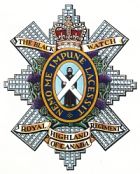
The Black Watch of Canada is a reserve infantry regiment in 34 Canadian Brigade Group, 2nd Canadian Division, of the Canadian Army. The regiment is located at 2067, rue Bleury in Montreal, Quebec, Canada, and is currently commanded by Lieutenant-Colonel R.M. Unger, MMM,CD. The regiment's armoury was designated a National Historic Site of Canada in 2008. They are the senior Canadian-Scottish Regiment.

The Royal Highland Fusiliers of Canada is a Primary Reserve light infantry regiment of the Canadian Army, with companies in Cambridge and Kitchener, and is an infantry sub-unit of 31 Canadian Brigade Group, headquartered in London, Ontario. The Princess Margaret, Countess of Snowdon and The Prince Andrew, Duke of York, as members of the Canadian Royal Family, acted as Colonel-in-Chief.
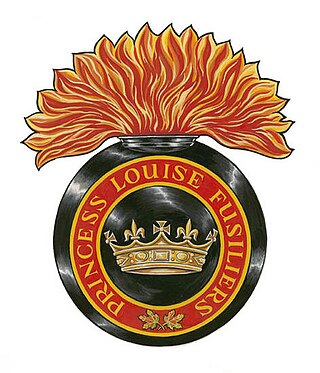
The Princess Louise Fusiliers is a Primary Reserve light infantry regiment of the Canadian Armed Forces. Formed as 66th The Halifax Battalion of Infantry and then named 66th Battalion after Princess Louise in 1879, it took its present name in May 1920. The 6th Machine Gun Battalion, CMGC amalgamated with the regiment in 1936
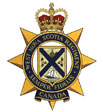
The West Nova Scotia Regiment is a line infantry regiment of the Canadian Army, part of the Primary Reserve, and is part of the 5th Canadian Division's 36 Canadian Brigade Group. The regiment recruits volunteers from the South-Western part of the province of Nova Scotia and has its headquarters at LFAATC Aldershot, near the community of Aldershot, Nova Scotia.
The 185th Battalion, CEF was a unit in the Canadian Expeditionary Force during the First World War.
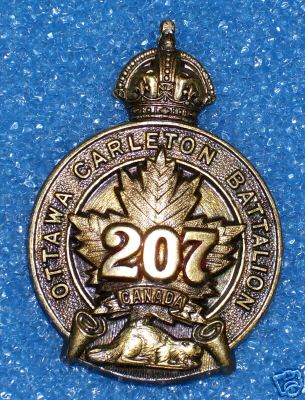
The 207th (Carleton) Battalion, CEF was a battalion of the First World War Canadian Expeditionary Force.
The 157th Battalion, CEF was a unit in the Canadian Expeditionary Force during the First World War.
The 246th Battalion, CEF was a unit in the Canadian Expeditionary Force during the First World War. Based in Halifax, Nova Scotia, the unit began recruiting in the summer of 1916 throughout the province of Nova Scotia. The unit sent two drafts to England in April and June 1917, both of which were absorbed into the 17th Reserve Battalion, CEF upon arrival. The 246th Battalion, CEF had one Officer Commanding: Lieut-Col. N. H. Parsons.
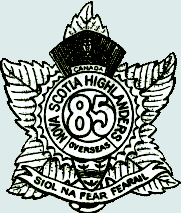
The 85th Battalion, CEF, was an infantry battalion of the Canadian Expeditionary Force during the Great War. The 85th Battalion was authorized on 14 September 1915 and embarked for Great Britain on 12 October 1916. Disembarking in France in February 1917, it fought as part of the 12th Infantry Brigade, 4th Canadian Division in France and Flanders until the end of the war. The battalion is most famous for capturing Hill 145 in their first battle. Today, the Vimy Memorial stands on Hill 145.
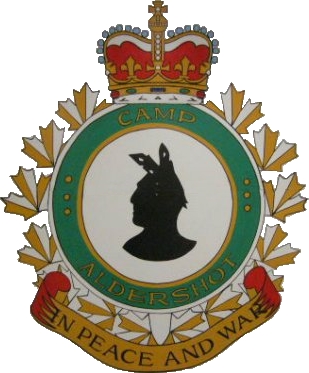
5th Canadian Division Support Group Detachment Aldershot is a training facility for 5th Canadian Division of the Canadian Army. It is located in Kings County, Nova Scotia.

The Halifax Rifles (RCAC) is a Canadian Army regiment that served between the years of 1860 and 1965 before being reduced to nil strength and placed on the Supplementary Order of Battle. The regiment was reactivated on May 10, 2009, as a reserve force unit performing the role of armoured reconnaissance. It is the first and only regiment since the 1960s to be reactivated from the Supplementary Order of Battle.

The Cape Breton Highlanders is an infantry regiment of the Canadian Army. It was established in 1871, merged into The Nova Scotia Highlanders in 1954, and re-established as a distinct regiment in 2011. It is part of the 5th Canadian Division's 36 Canadian Brigade Group and is headquartered at Sydney, Nova Scotia.

The 25th Battalion, CEF was a unit in the Canadian Expeditionary Force during the Great War. It was the second infantry battalion of ten to be raised in Nova Scotia during the war. The 25th served in Belgium and France as part of the 5th Canadian Brigade, 2nd Canadian Division from 16 September 1915 until the end of the war. Regimental headquarters were established at the Halifax Armouries, with recruitment offices in Sydney, Amherst, New Glasgow, Truro and Yarmouth. Of the 1000 Nova Scotians that started with the battalion, after the first year of fighting, 100 were left in the battalion, while 900 men were killed, taken prisoner, missing or injured.
The 40th Battalion, CEF, was an infantry battalion of the Canadian Expeditionary Force during the Great War.

The 73rd Battalion, CEF was an infantry battalion of the Canadian Expeditionary Force during the Great War. The 73rd Battalion organized in June 1915, initially commanded by Lieutenant-Colonel Peers Davidson, was placed on 'Active Service' as an 'Overseas Battalion, on 10 July 1915, as authorized in Militia General Orders.

The 97th Battalion, CEF, was an infantry battalion of the Great War Canadian Expeditionary Force. The 97th Battalion was authorized on 22 December 1915 and embarked for Britain in May 1916, but was halted in Aldershot, Nova Scotia when the American government protested the title of ‘American Legion,’ as the country was officially a neutral state. The delay caused a number of officers to resign, and a number of men deserted when it became clear they would not enter the front lines. Finally the designation ‘American Legion’ was dropped and the unit could proceed overseas. 31 officers and 798 other ranks boaded the RMS Olympic on 19 September 1916. The next month 270 men were absorbed by the Depots of The Royal Canadian Regiment, CEF and the rest, 428 soldiers, joined the Princess Patricia's Canadian Light Infantry, also, to provide reinforcements for the Canadian Corps in the field.














